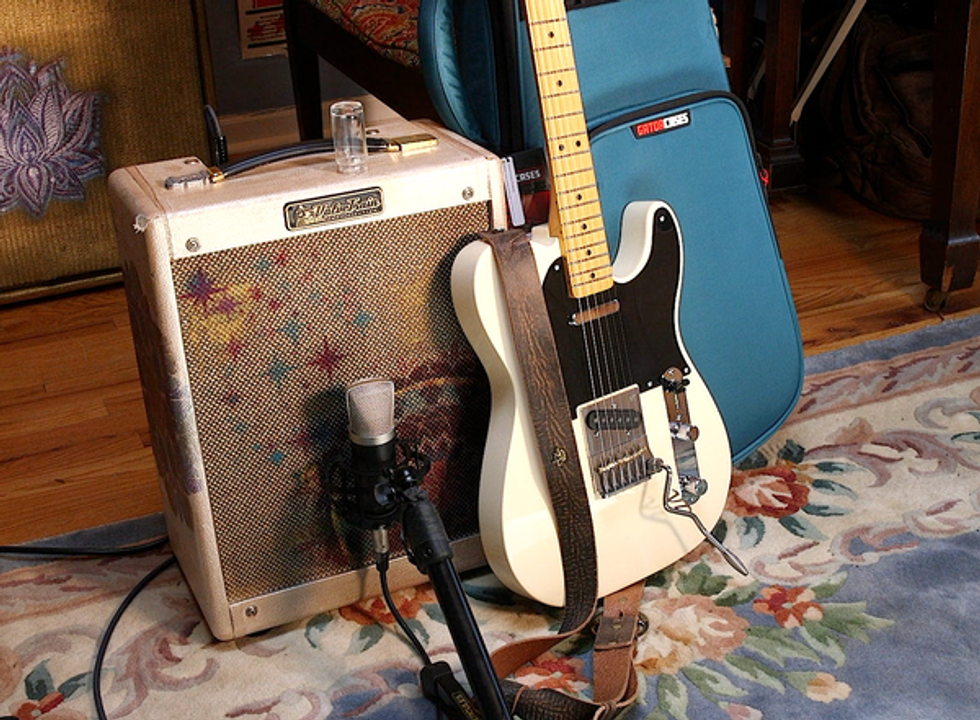Tips and tools you need to change strings on a classical guitar.
Changing strings on a nylon-strung instrument is much different than wrestling with the buttons and wire on a steel-string acoustic. PG’s Nikos Arvantis offers an in-depth tutorial on changing nylon strings, and specifically on a classical instrument—where the number of string holes on the tie block (six, nine, or 12) vary model-to-model. His tools: a normal tension D’Addario string set, a string winder, wire clippers and a headstand. Nikos walks us though one string at a time, from bridge to tuners. He starts by running the bass string through the bridge to the tie block—in this case a 6-hole variant—and displays proper string tying technique. Thinks loops and remain patient. This can be challenging the first few times, and especially so for those with large fingers. Next we move to the headstock. The lowest bass string also needs to be tied securely, and then wound to pitch in such a way that the windings run on the outside of the string roller. For the next two low strings, the windings go to the inside. This avoids string overlap. Next he moves to the highest string, where the light gauge can be especially hard to knot, and also keeps the string on the outside of the roller while winding up to pitch. The next two highest strings go on the inner part of the roller, as with the bass strings. Finally, the loose ends sticking out beyond the knots on the tie block and rollers are trimmed with the wire cutter. And violá! If your nylon-string guitar has a nine- or 12-hole block, consult the manual or other sources.













![Rig Rundown: Russian Circles’ Mike Sullivan [2025]](https://www.premierguitar.com/media-library/youtube.jpg?id=62303631&width=1245&height=700&quality=70&coordinates=0%2C0%2C0%2C0)









